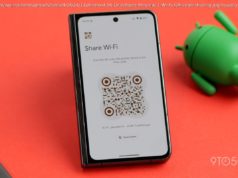It has been years in the making, but 5G has finally become a reality. Although 5G coverage is still limited, expect to see it expand in the U.S. from now on.
After seemingly endless buildup,5G — the fifth generation of mobile network technology — is very much a reality. Wireless carriers started rolling out 5G several years ago, and today mobile 5G internet access is widely available. But what is 5G exactly? The answer often raises even more questions. Some wonder where 5G is available, and if they’ll ever see it in their city. Others are more interested in which 5G phone they should buy. And there’s the perennial debate about which carrier has the best 5G phone plan. You have questions about 5G networks, and we have the answers. Here’s everything you need to know about 5G. Simply put,5G is the 5th generation of mobile networking that runs alongside — and eventually will replace — your 4G LTE connection. With 5G, you get dramatically faster download and upload speeds than 4G networks. Latency — the time it takes devices to communicate with wireless networks — is also considerably lower. 5G networks are inherently more efficient, handling more connections per tower and at faster speeds per device.5G is also designed to work across a wider range of radio frequencies (aka spectrum), opening up new possibilities in the ultra-high mmWave (millimeter-wave) bands for carriers to expand their network offerings. Because 5G is an entirely new technology that operates on new frequencies and systems,4G-only phones are incompatible with the new 5G networks. 5G networks commenced deployment in 2019, but the groundwork for the next-generation network was laid years earlier. The 5G standard architecture was created in 2016, at which point every company and person involved from both the network and consumer side could start making devices that were 5G standard compliant. But 5G hasn’t yet hit total market saturation, as it takes a considerable amount of investment to build an entirely new network. But looking back at the history of the 4G rollout we can get an idea of how long it could take.4G (LTE) was first deployed commercially in 2009, and didn’t go live in the U.S. until the end of 2010. It took until 2013 for 4G to hit mainstream status in many countries, and become dominant over older 3G networks. Following a similar timeline, we’re still a few years away from 5G emerging as the dominant network worldwide, and for many of the same reasons.4G faced similar technical hurdles as 5G, operating on the new spectrum with new technologies required on both the network and device ends — though it too brought a substantial increase in speeds over the previous-generation network. For the U.S.,5G deployments lagged behind many countries but has caught up aggressively recently. Like 4G,5G technology operates on a wide range of radio spectrum allotments, but is capable of running on a wider range than current networks. With 5G, there are two distinct frequency ranges that work in different ways. The most common form of 5G is called Sub-6, and there is also mmWave. Sub-6: This refers to 5G that operates at a frequency below 6GHz. All carriers have some form of Sub-6 network, primarily because 4G LTE currently runs on these lower frequencies. The Sub-6 spectrum is critical to the rollout of 5G, because these lower-frequency radio waves can travel long distances and penetrate walls and obstacles. That means carriers can deploy much larger networks without having to build a vast number of new cell towers. Sub-6GHz low band, in short, offers more blanket coverage and a stronger signal. mmWave: Millimeter wave refers to the ultra-high-frequency radio waves — between 24GHz and 100GHz — which have a very short wavelength. These are used to supercharge 5G connections and data transfer to deliver download speeds of multiple gigabits per second. While mmWave connections can deliver speedy downloads, the high-frequency signals can’t travel long distances and can’t penetrate obstacles for the most part — even a window or leaves of a tree can block a connection. Thus, to make a robust mmWave network, carriers need thousands of small network cells in every city. Essentially, mmWave network deployment comes down to building little networks around nearly every corner of every building. So why bother? Well, mmWave can handle an incredible amount of data, and an incredible number of users simultaneously. That makes it better for densely populated cities, as well as places like stadiums and arenas. mmWave is also using an all-new spectrum that isn’t crowded by other 3G,4G, and Sub-6 5G networks — so there’s no trade-off in resource use. All of the major carriers are deploying mmWave networks, but to date, those connections are limited to a handful of downtown areas in major cities. We expect mmWave networks will get more robust, but only time will tell how long that will take. Until then, Sub-6 offers a vast majority of people 5G a vast majority of the time. Clearly,5G is faster than 4G, but by how much? The standards for telecommunications technologies, developed by 3GPP, are somewhat complex, but here’s a general rundown of how fast 5G is: In the real world, actual 5G speeds vary widely. Eventually, Sub-6 networks should be able to deliver speeds of multiple gigabits per second (Gbps), but for now, connections can be anywhere from 50Mbps to 400Mbps. Real-world mmWave speeds are a little harder to pin down, since mmWave distribution is still fairly sparse. If you do find yourself on a mmWave connection, you may be able to achieve speeds of up to 4Gbps.






